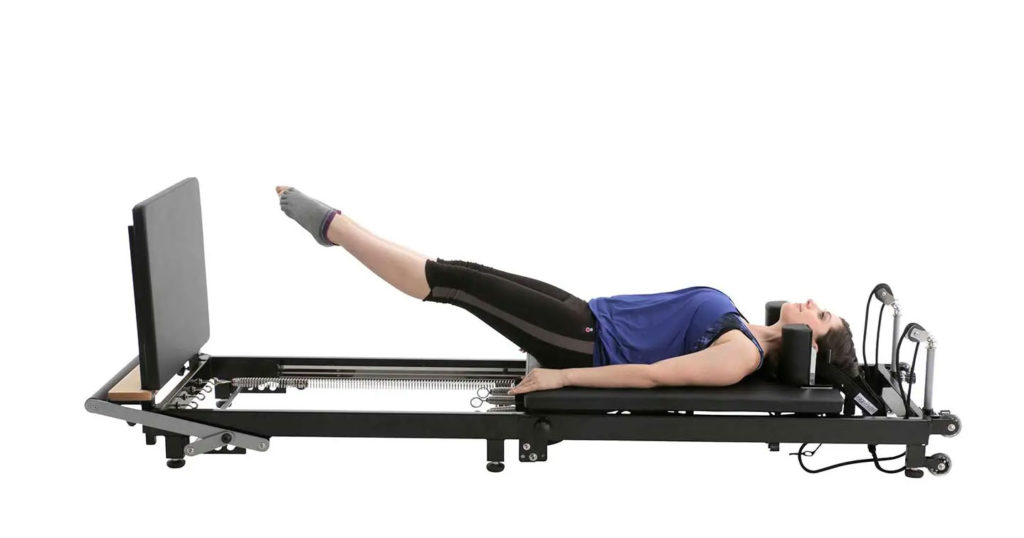Reformer Pilates Physio Exercises In A Physio Rehab Space
At The Movement Centre in Randwick we are thrilled to have our new Pilates reformer up and running in our physio rehab gym. Pilates reformers are a great bit of equipment for a wide range of exercises – not just fancy and intricate Pilates maneuvers. Reformer exercises utilise the sliding bed with the application of springs to add resistance. And there are many reasons that we love using the reformer with our patients outside of the traditional application of Pilates doctrine. Detailed below are some of the reasons why we love to incorporate the reformer Pilates physio work into our patient rehab programs.Controlled smooth movement
First and foremost, the reformer allows for a very smooth movement. Using the sliding bed and the spring resistance, we can adjust the load according to our needs. At Movement Centre we work with athletes, arthritis, back pain and achilles repairs all in one day. The reformer allows us to adjust the loading for each of these. The controlled, smooth movement, while a long way from replicating movement on a sports field, is often a great way to get muscles firing, and load tendons and joints while they recover from acute injury, flare-up or surgery. Fixed positioning – makes it easy for us to make adjustments to alignment. Further, it allows us to perform high repetition work while focusing on intricate details like positioning. Using the reformer allows us to unload from weight bearing exercise. This means we can focus more on the control of the joints and muscles being worked, without irritating sore joints. This is particularly relevant for knee, hip and ankle rehabilitation. We can spend time controlling the alignment and position of the knee and foot in ways that normal weight bearing doesn’t allow. We can then increase the load of the springs and strengthen these areas in really controlled and comfortable alignments and ranges. Again, this isn’t particularly relevant to high-end return to sport rehab. But it provides a really useful tool early in the rehab process. Muscles get stronger, joints get to move, and the patient gets a workout -all of which can be hard to accomplish when weight bearing itself is a challenge.Reformer Pilates physio exercises are low impact
Reformer physio work allows us to really gradually load muscles, tendons, joints, and bones. The springs allow for a really light to quite heavy load. The gliding nature of the bed, and resistance from the springs means we can replicate the elastic response of muscles and tendons for movements like running and jumping – but at much lower load. This is quite an important aspect of rehab for leg injuries. Strength alone doesn’t quite replicate the movements required. Being able to spring off the foot like in a running or jumping movement helps to recreate the type of forces required for a return to sport. Load is determined by spring-loading, not weighted pulleys or body weight. One of the most interesting and useful aspects of reformer physio is a bit harder to explain. Again it comes down to the unique load that working against spring tension creates. On the reformer, if we are performing a squat / leg press, then when we are deepest in the movement, the springs are under the least tension. As we push through the movement the springs add more and more resistance as we extend. This means the muscles get challenged more towards the end of the range. It also means joints and tendons aren’t loaded in positions of compression or disadvantage. This makes reformer exercise more or less the opposite of normal weight bearing exercise. At the depth of a squat, our muscles are at their longest and most disadvantaged position. They have to work their hardest at the bottom of the movement in a lengthened position, on long levers. This can make it hard to control for co-ordinated movement early in the rehab process, especially where pain or weakness is present.Reformer Pilates physio exercises provide a great way to apply force – predictably
The reformer allows us to strengthen without risk of falling, balance issues, or aberrant movements that may irritate acute injuries. This makes it a useful piece of equipment to commence loading muscles early in the recovery, even if there is some joint instabilty – such as after a ligament sprain or surgery. We can often commence patients on calf press and leg press type movements much sooner than we could perform their standing bodyweight alternative. This means we can minimise the atrophy and weakness that can result from injury and surgery, and return our patients to sport quicker and safer. Many of the movements translate well to functional upright exercises Reformer physio exercises are a great stepping stone to harder and more sports specific loading. They can be used to simplify movements, decrease load, and minimise stability issues.If you are interested in trying out reformer Pilates physio exercises, come and see us at The Movement Centre in Randwick.



